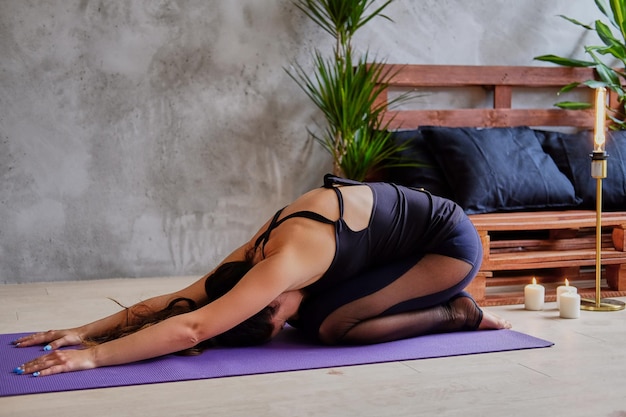
A yoga body isn’t just about being flexible; the ancient practice can also boost memory and improve heart and bone health, according to Anna Magee.
Yoga has become hugely popular in Britain, with people spending about £790 million a year on classes and mats. While new variations like rage yoga, naked yoga, and even dog yoga pop up, scientific research is backing up yoga’s health benefits.
Researchers at UCLA found that a three-month course of yoga and meditation was better than memory exercises at reducing age-related brain decline. Another study showed it improved sleep in breast cancer survivors.
Lucy Edge, 53, once an advertising executive, turned to yoga during a deep depression. Instead of taking prescribed anti-depressants, she took six months off work and went to India to study yoga. Although she didn’t get the perfect yoga body, she returned much happier and more content. She has since written three books about yoga and started Yoga Meds, a resource listing over 300 clinical trials on yoga’s health benefits.
Here’s how yoga can help your health and how to start:
If your memory training has been limited to crossword puzzles and Sudoku, trying yoga might be a good idea. UCLA researchers compared the brain scans and memory tests of 25 adults over 55 who did 12 weeks of memory exercises or a yoga and meditation course. The yoga group showed better improvements in memory, reduced depression and anxiety, and increased resilience to stress.
You don’t need to spend hours doing headstands to reap the benefits. The study participants did just one hour of Kundalini yoga per week. This simple form of yoga includes breathing techniques, meditation, and mantra chanting, which might feel awkward at first but can be easier than other types of meditation. They also did 20 minutes daily of Kirtan Kriya, a meditation that involves chanting, hand movements, and light visualization.
While walking and jogging are often recommended for heart health, yoga might be just as effective. A review of yoga and cardiovascular disease in the European Journal of Preventative Cardiology found that yoga can lower heart disease risk as much as conventional exercise like brisk walking. Stress, a major contributor to heart disease, can be reduced through yoga since it lowers stress hormones that raise blood pressure and heart rate.
Dr. Mike Knapton from the British Heart Foundation stated that yoga’s benefits for emotional health, such as reducing anxiety, stress, and depression, can help people with heart disease. It has also been shown to improve blood pressure, cholesterol, and weight, all risk factors for heart disease.
To start, Charlotte Watts, a yoga teacher and author, recommends gentle yoga for stress reduction. Restorative yoga, suggested by senior teacher Anna Ashby, involves supported postures held for up to 12 minutes, which gives the nervous system a break and reduces stress quickly.
Yoga can also help with back pain. Sarah Shone, a physiotherapist and yoga teacher, developed yoga classes for back pain, with 87% of participants reporting less pain. NICE guidelines include yoga as a useful exercise for lower back pain, and Shone aims to train more physiotherapists to use yoga clinically.
Yoga helps combat incontinence by targeting pelvic floor muscles, and as a weight-bearing exercise, it can increase bone density. It can be modified for accessibility, making it suitable for everyone.
Beginners might start with gentler styles like Hatha or Iyengar yoga. If you have health issues, inform your yoga teacher and consult your doctor to see if you qualify for subsidized yoga classes.
Good yoga props can enhance your practice. When choosing a yoga mat, consider its durability, weight, portability, length, and thickness. A thicker mat is beneficial for joint protection.
Healthista recommends the Valka Yoga Elephant Cork Yoga Mat for its eco-friendliness, durability, and comfort. It’s made from organic cork and natural rubber, making it renewable and recyclable. It also includes a carry strap and offers a 15-day money-back guarantee and a one-year replacement warranty.
For more stability in poses, a cork yoga block like the Valka Yoga Block in the same design is also recommended. Although not as light as foam, cork blocks provide better grip and stability.
Not flexible? No problem—yoga can still help you. Beginners might try Yin or Restorative yoga classes, often done with props for support. Vinyasa Flow classes, which are more energetic and link postures to breath, can also be adapted for beginners. Iyengar yoga focuses on alignment and uses props to assist poses. Anusara yoga offers alignment-focused poses with flowing movements and upbeat music. Yoga Therapy, practiced by trained teachers, uses yoga to help heal injuries or illnesses.